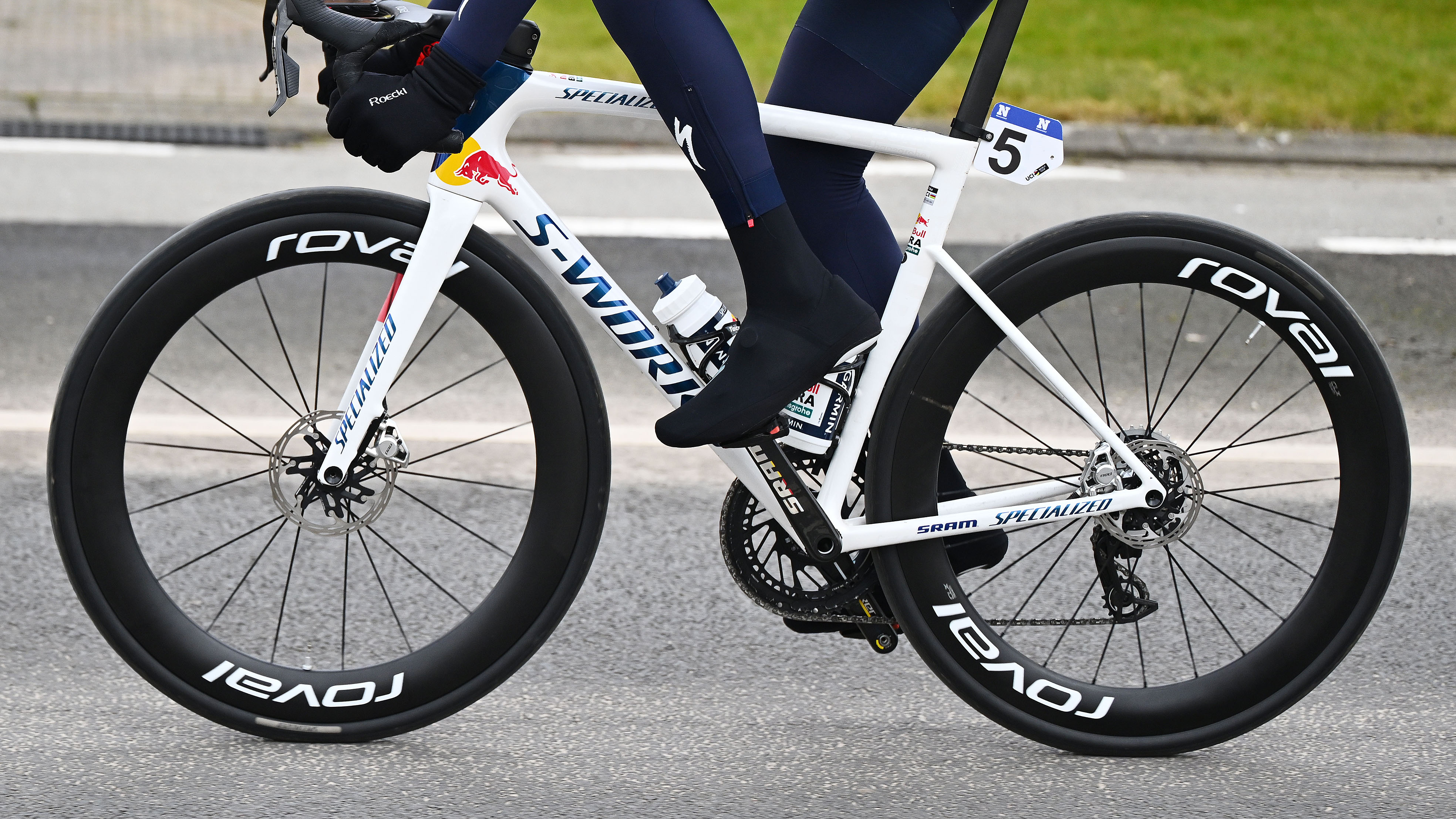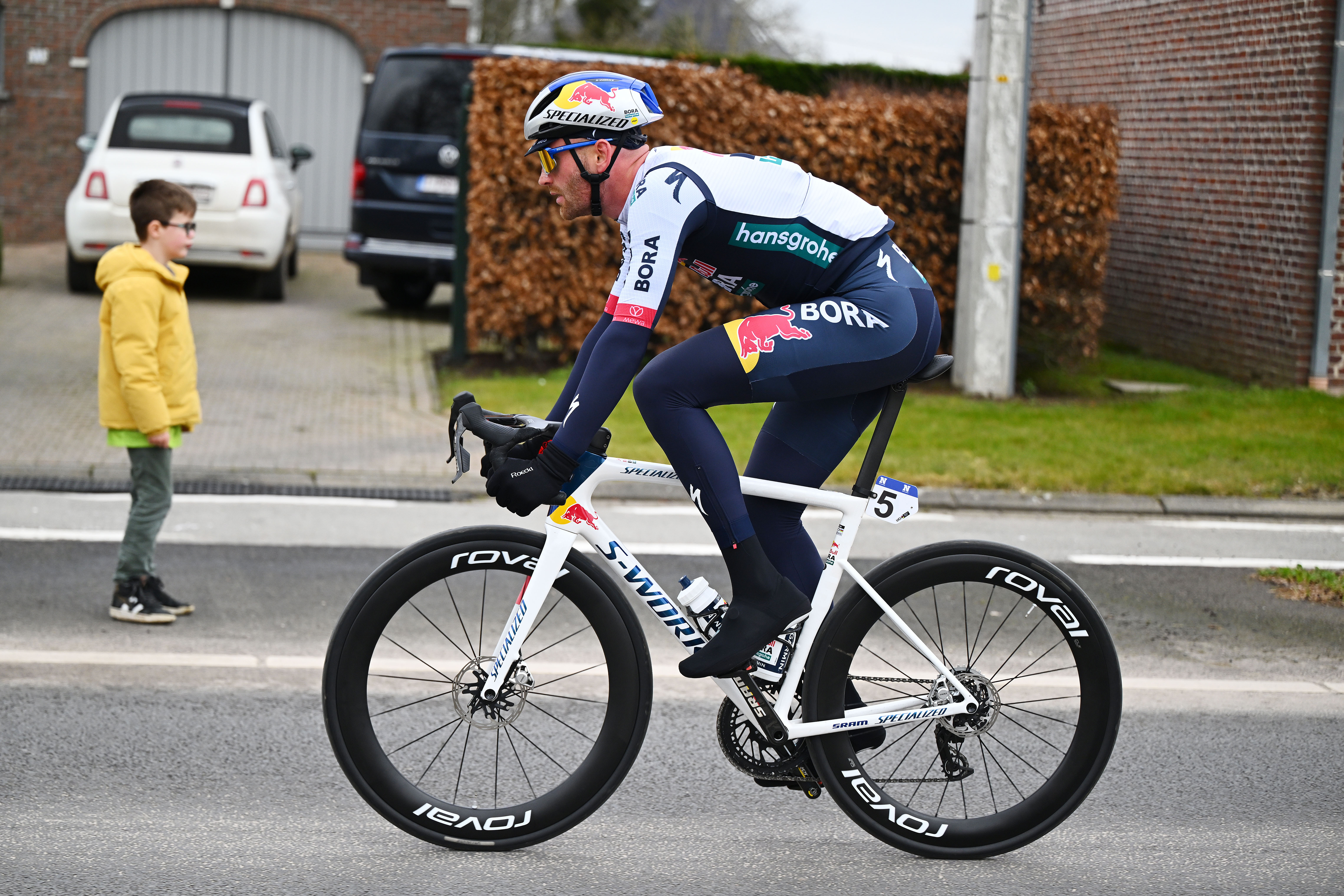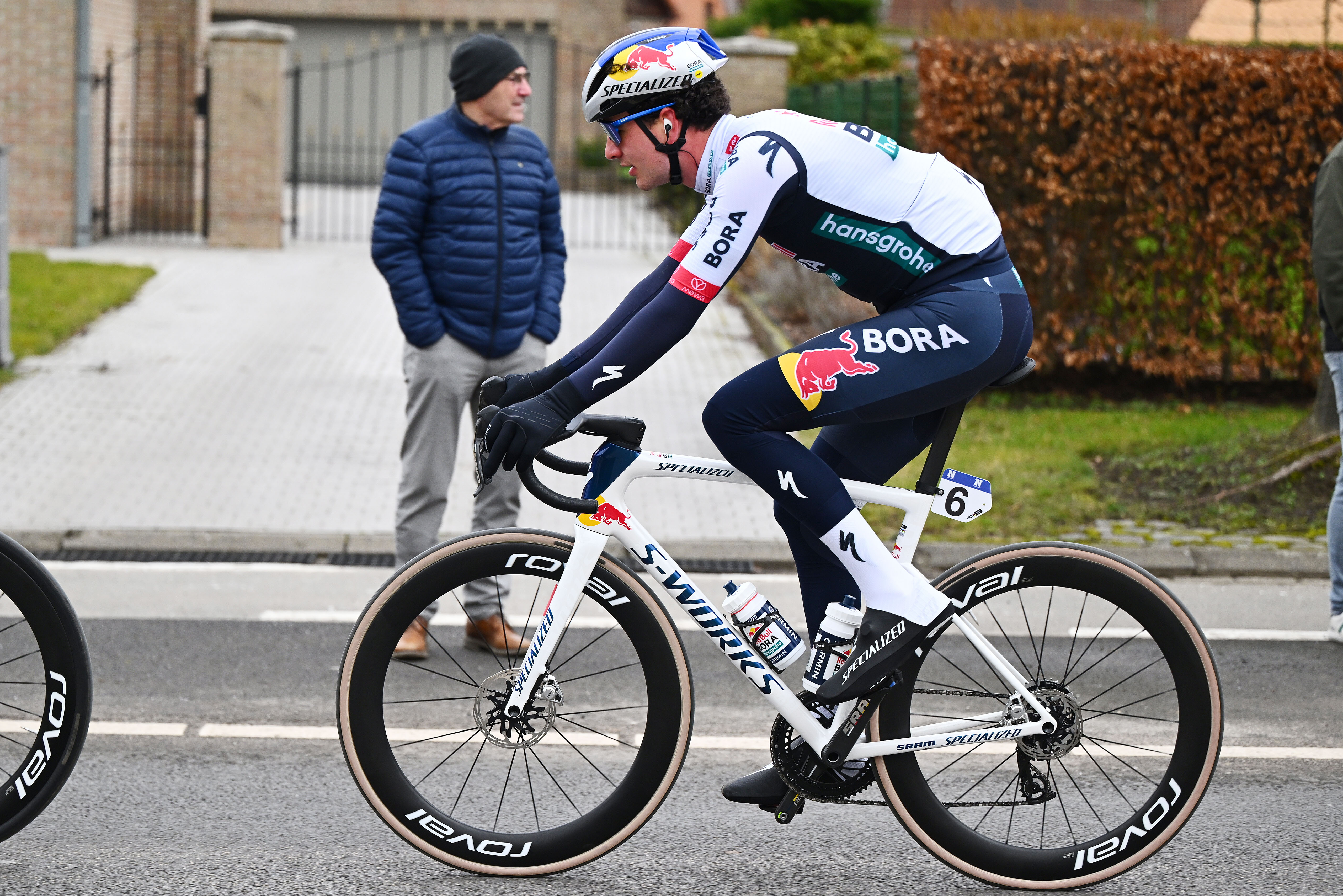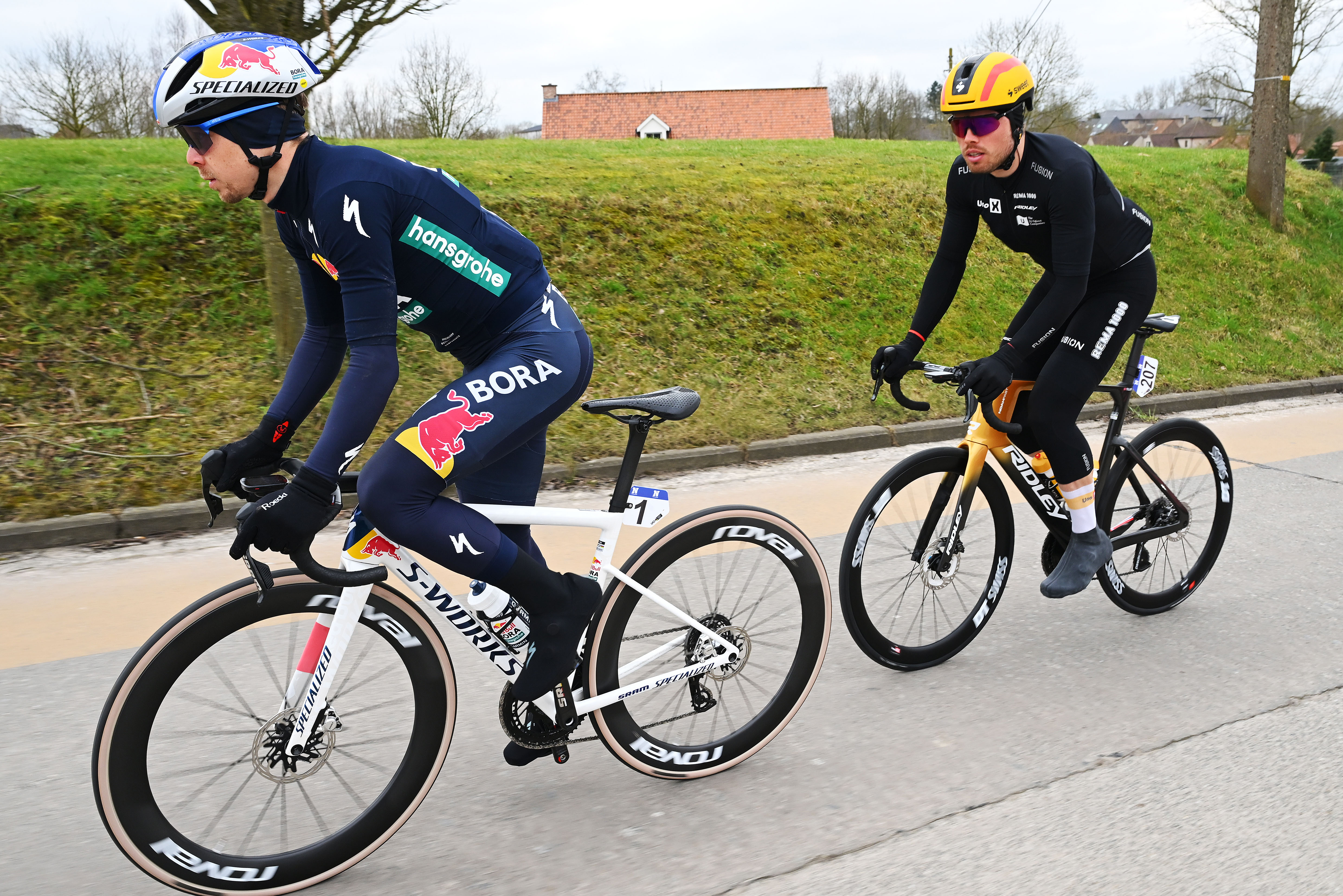
No sooner have I penned a piece about how Tom Pidcock’s integrated pressure sensor wheels might actually catch on than I am pulled inexorably down into another tech rabbit hole like Alice, but into a world that’s far nerdier than Wonderland. Our Opening Weekend tech gallery has all of the tech highlights, but trawling the images from the in-race photographers I think I have spotted something really curious: I think several Red Bull-Bora-Hansgrohe riders were deliberately running a ‘road mullet’ wheelset, with a deeper front wheel than rear.
What’s more, to massively blow my own trumpet, I predicted this would happen. Sure, I had it in my 2024 Tour de France predictions piece (if you want to check my homework), but I am only a few months out.

What is a road mullet wheelset?
‘Mullet’ has become a bit of a well used descriptor in cycling tech. It can be used, of course, to describe Shane Archbold’s haircut, but it is also used to describe mountain bike wheelsets that mixed a 27.5 rear wheel with a 29er up front. Latterly it’s been co-opted by the gravel community for a component setup that mixes road shifter hoods with a mountain bike rear cassette and derailleur for additional gear range, similar to what we saw the riders of Lidl-Trek using at Opening Weekend. Now I think it’s going to catch on with road wheelsets to describe any setup with a deeper front wheel than rear. I’ll get into why teams might opt for this shortly.
From what I can see the Red Bull-Bora-Hansgrohe riders were mixing a new Roval front wheel that was first seen in use at the Paris Olympics on the front of Remco Evenepoel’s time trial bike with a Roval Rapide CLX II Team rear wheel. The current Roval Rapide CLX II Team rear wheel is 60mm deep, with the front wheel from that set measuring only 51mm. This means the front wheel in use here is potentially around 70mm in depth.
Some fervent discussion within the tech team here was undertaken to stress test this theory. Was it maybe a hasty front wheel swap after a puncture? Seems unlikely, as it appears at least three riders were on this setup. Was it perhaps something to do with the latest, unreleased S-Works Turbo tyres that were also in use by the team? This also seems to be unlikely, as the setup was used by riders on the unreleased tyres, and also those appearing to use the older S-Works Mondo tyres. Why, then, would a team opt to fit a deeper front wheel than the rear, against the standard practice of countless years?

Aero up front, weight at the rear
If the trend in aero bike design of recent years had to be summed up in a single sentence it would be ‘make the front more aero and make the rear end lighter’.
In short, the leading edges of the bike (and the rider too) have more of an impact on the overall aerodynamic picture than the rear, where the air is turbulent, chaotic, and dirty. Brands have focussed on making head tubes deeper (see the latest Noah Fast 3.0 bike from Ridley for an extreme example), and concurrently we have seen seat stays especially get thinner in an effort to improve aerodynamics while allowing the bikes to hit the 6.8kg UCI minimum weight limit, or at least get as close to it as possible.
Red Bull-Bora-Hansgrohe race exclusively on the Specialized S-Works Tarmac SL8, and while in our own wind tunnel tests it performed extremely well, it’s also relatively lightweight. Occasionally, race bikes have to have weights added in order that they make the weight limit (flying in the face of the actual point of the weight limit itself, but that’s beside the point), and it’s entirely possible that, instead of simply adding weights to the bottom bracket shell, the team has instead opted to add weight at the front wheel in a way that should make the bike as a whole more aerodynamic. Given the lumpy parcours of Omloop, low weight is clearly a priority, but as this appears to be a time trial front wheel it’s not like there’s a deeper rear to go with it (short of a disc wheel, which would be a very illegal setup).
In discussions with Colnago last year I ran some calculations based on combined wheelset weights, hypothesising that on a mountain stage, a pair of Enve SES 4.5 wheels could be swapped out for an Enve 6.7 front and 2.3 rear. This would be a net difference of 210g/7.4oz in favour of the 'mullet' setup. Without actually testing the aerodynamics of each setup it is impossible to know for sure, but it could be that, as well as a net weight improvement, it is also similar or even better aerodynamically.

Are there any drawbacks?
All else being equal, a deeper front is harder to control in windy conditions, as well as generally being stiffer, but this is unlikely to trouble the pros. Aesthetically it’s quite challenging, and the sport is often a slave to aesthetics and tradition, but given that pros are quite happy to run extremely deep front wheels in conjunction with an even deeper rear at times I think, for racing purposes at least, there are very few drawbacks.
Whether it catches on commercially will ultimately depend on whether it catches on in the pro peloton. Even just five years ago I’d have said there wasn’t a chance, but now, with every single stone being turned over in the hunt for the very last fraction of a watt we are seeing time trial helmets in use in road races, visors have made a comeback, and front derailleurs have been roundly jettisoned in time trials against the run of tradition in pursuit of speed. In that context, a slightly deeper front wheel than rear doesn’t sound so outlandish if there are gains on the table.
Cyclingnews has reached out to Red Bull-Bora-Hansgrohe for comment.







